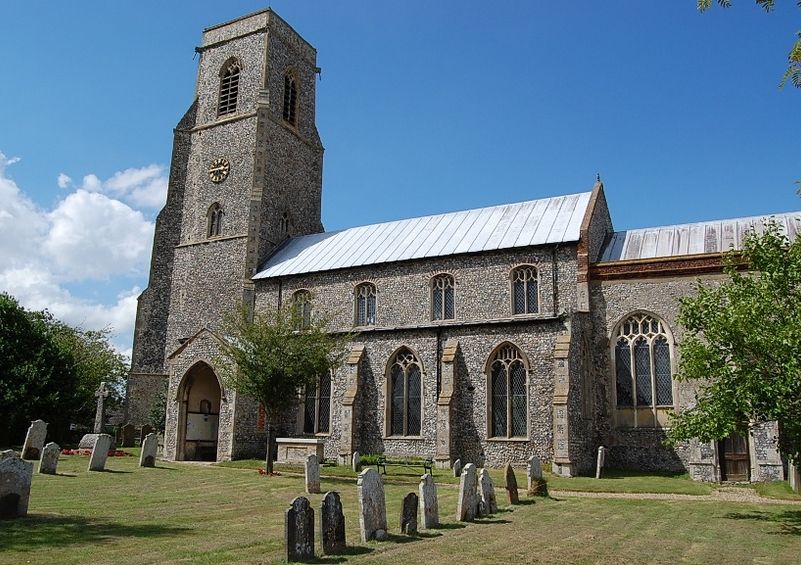In the centre of Trunch, surrounded by a lovely collection of cottages and the more modern Crown Inn, is St Botolph’s church. Much of what you see of the church is early 15th century, built upon earlier foundations.
A large variety of excellent musicians and ensembles have performed here over the past few years. The medieval church offers an enchanting atmosphere and superb accoustics.
St Botolph’s is a largely Decorated and Perpendicular style church and has Nave, north and south aisles, Chancel, west square tower with diagonal buttresses, and south porches to both main and chancel doors.
The oldest part of the Church is probably the Chancel, which is early 14th Century with later additions. Lord Nelson’s daughter Horatia’s ledger stone is in the chancel and there are fine medieval misericords (mercy seats). Each carving is unique; some represent angels, and others are more grotesque in nature. In addition there are some beautifully carved pew ends. You can download the very interesting and detailed document “A history of the Chancel” which was written by the late Anne Horsefield in 2009 to satisfy a requirement of English Heritage before a repair grant could be given.
St Botolph’s font
The very tall Nave has a fine hammerbeam roof. The great treasure of St Botolph’s however is the marvellous font canopy. Dating from c.1500, it is ornately carved in oak, and has slender pillars forming a hexagonal enclosure.
It is one of only four to be found in England, the others being Durham Cathedral 1680, St. Peter Mancroft, Norwich 1450, and St. Mary’s, Luton 1350.
In addition to the font canopy, Trunch features a superb 15th century hammer beam roof, a feature of many churches in Norfolk and Suffolk. Here the carvings of angels are beautifully performed.
Along with the font canopy and roof the medieval screen survives. Like the canopy, this is richly ornamented. The twelve figures (11 disciples and St Paul) are boldly placed and coloured, but their faces have been completely vandalised by the 16th century reformers.
St Botolph, to whom the church is dedicated, was a seventh century Anglo Saxon noble of the Benedictine Order who was among the most powerful Christianising influences of his time.
In the north aisle is the historic organ built by William Gray of London in 1808 and rebuit in 1957 by the Trunch organ builders Williamson and Hyatt. The instrument has recently been restored.
(source: Wikipedia) “Botolph, Botulph or Botulf (d. c. 680) was an English abbot and saint. He is the patron saint of travellers and the various aspects of farming. His feast day is celebrated either on 17 June (in England) or 25 June (in Scotland), and his translation on 1 December.”



